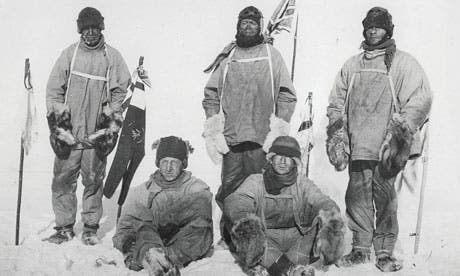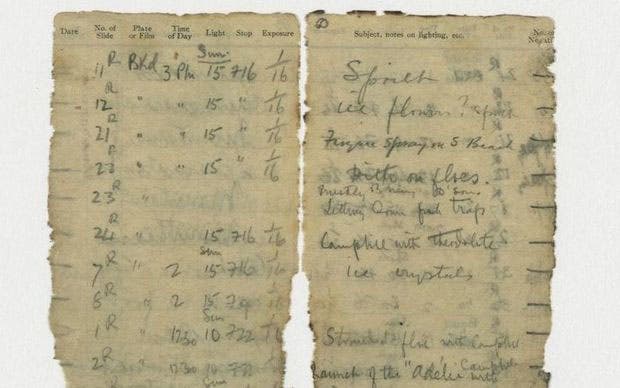A notebook that laid under the cover of Antarctic ice for the past 100 years was discovered by Newzealand’s Antarctic Heritage Trust. The notebook belonged to one of the members of Robert Scott’s scientific crew, an English explorer who raced against Roald Amundsen to be the first to reach the South Pole. While Scott eventually reached his destination, he was beaten to it by Amundsen who hung the Norwegian flag on the Antarctic Plateau (90° 0′ S), on the 14th of December 1911 or 34 days before Scott. If defeat at Amundsen’s hand wasn’t enough, Scott along with four other expedition members died of starvation and exhaustion after being trapped by bad weather.
An icy, century-old notebook
The author of the notebook, George Murray Levick, was not among those who perished with Scott, however. When Scott reached the Antarctic, he divided his Terra Nova expedition in two: one group would follow him to the South Pole, while the other journeyed along the coast and conducted scientific observations. A surgeon, photographer and zoologist, Levick scribbled his notebook with things like the date, subjects and exposure details for photographs he made during 1911 around Cape Adare.
In fact, Levick almost met the same fate as Scott and his party. The six-man Northern Party was also trapped by a snow storm, preventing the expedition ship from retrieving them. The team, however, managed to survive after taking shelter in a snow cave and hunting seals and penguins. Levick returned home to England after the ill-fated expedition and died in 1956, yet his notebook remained buried under Antarctic ice for all this time.
“It’s an exciting find. The notebook is a missing part of the official expedition record,” said Nigel Watson, Antarctic Heritage Trust’s Executive Director. “After spending seven years conserving Scott’s last expedition building and collection, we are delighted to still be finding new artifacts.”

Frozen in time: the five members of Scott’s expedition who made it to the South Pole in 1912, but died on the return. From left: Oates, Bowers, Scott, Wilson and Evans. Photograph: Popperfoto/Getty Images
While most of Levick’s writings remain legible, the 104-year old notebook has certainly seen its share. The binding was dissolved and some stories are faded beyond recognition. After its discovery outside of a hut built by the Trust’s conservationist specialists when ice melted the previous year’s summer, the notebook has since been digitized. There’s no word yet when or if it will become public.











